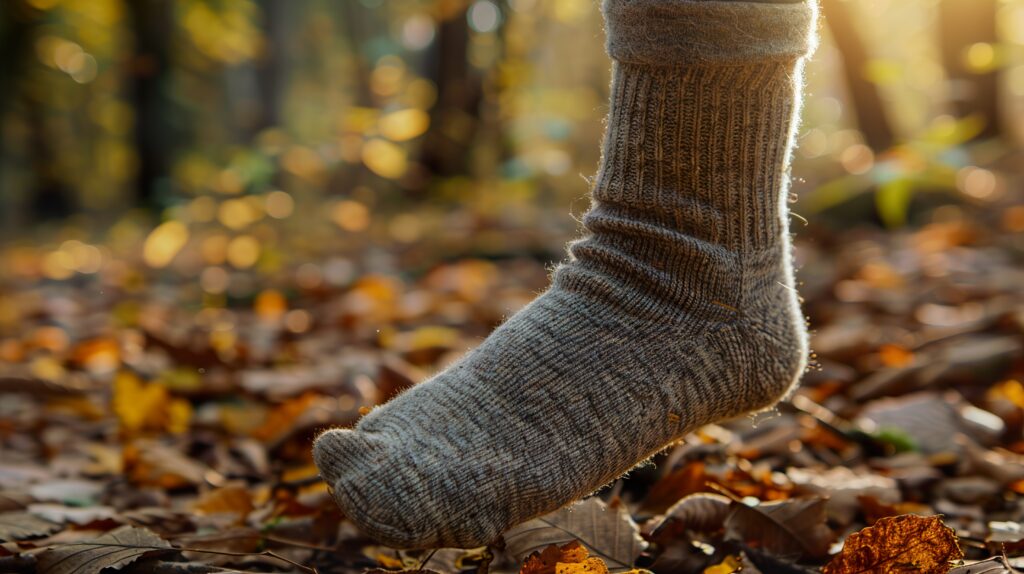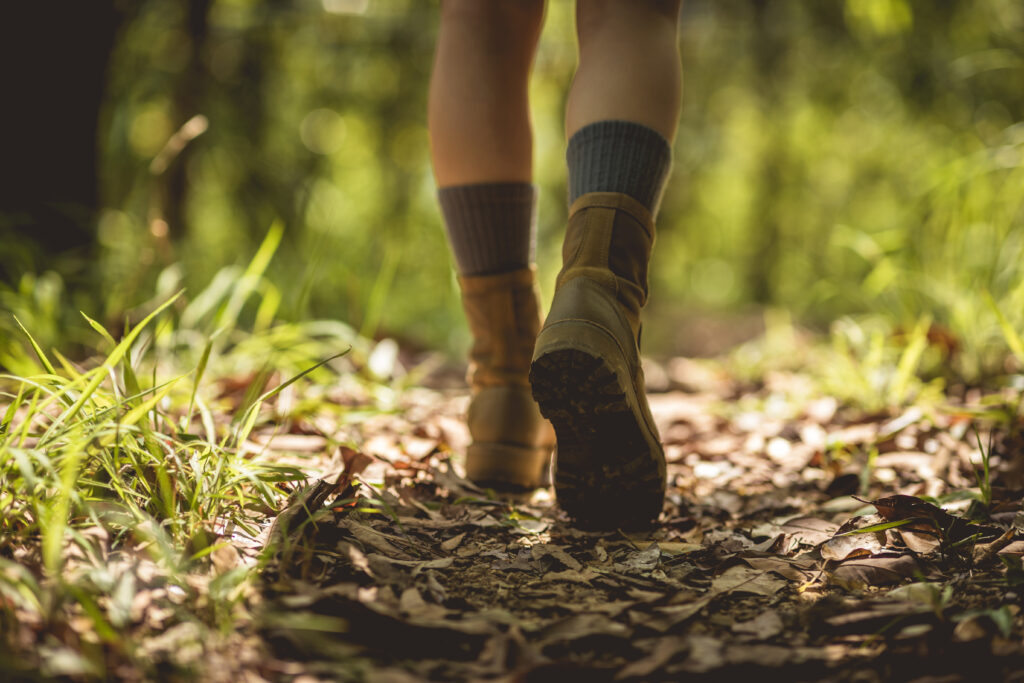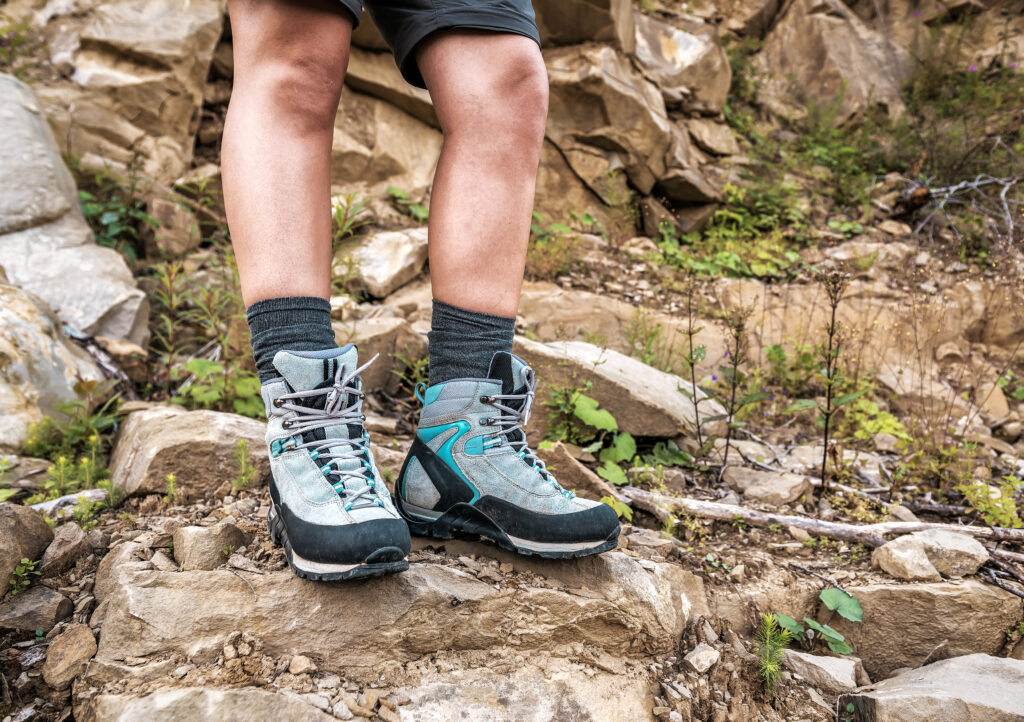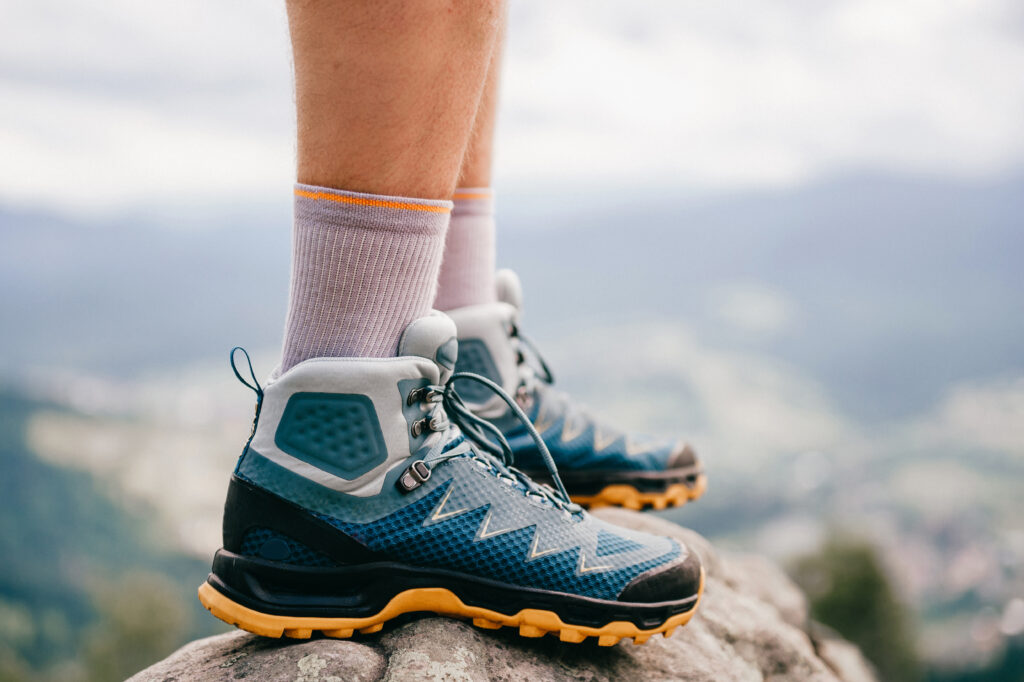Overview
When preparing for a hiking excursion, a lot of people concentrate on their boots, backpacks, and clothes, frequently forgetting to carry socks, which are an essential piece of equipment. To ensure comfort, avoid blisters, and improve overall performance on the path, hiking socks are essential. We will examine the significance of hiking socks, their various varieties and features, and offer advice on selecting the best pair for your requirements in this extensive guide.
The Importance of Best Hiking Socks
Not just any socks will do for hiking; these socks are made specifically to offer support, cushioning, and moisture control when engaging in outdoor activities. Here’s why it’s imperative to spend money on premium hiking socks:
Coziness and Assistance
• Cushioning: To reduce impact and enhance comfort on uneven terrain, hiking socks are designed with different degrees of cushioning.
• Arch Support: When hiking for extended periods of time, proper arch support helps reduce foot strain and discomfort.
• Seamless Construction: In order to lower friction and avoid blisters, many hiking socks have seamless construction.
Controlling Moisture
• Wicking Properties: The purpose of Smartwool hiking socks is to draw moisture from the feet and remove it, keeping the feet dry and lowering the possibility of fungal infections and blisters.
• Breathability: Materials that allow for air circulation help control temperature and avoid overheating.
Sturdiness
• Reinforced parts: To resist the rigors of rugged routes, key parts such as heels and toes are frequently reinforced.
• Premium Materials: Long-lasting materials make socks endure longer, even after repeated wear.
Hiking Socks Types
You may select the ideal pair of hiking socks for your needs by being aware of the various types available for example Darn Tough hiking socks.The primary categories are as follows:
Lightweight Socks for Hiking
Lightweight hiking socks are perfect for trails with less elevation gain and warm weather. They are made to be breathable and moisture-managing with very little padding.
Advantages:
• Breathability: Great for warm weather because they keep your feet cool.
• Comfort: Offers minimal support and cushioning for easier hikes.
Midweight Hiking Socks
These socks are ideal for light trails or day hikes in warm weather because they strike a balance between breathability and cushioning, making them adaptable to a range of environments.

Advantages:
• Adaptability: Fits well on most hiking terrain, including mild trails and a range of weather conditions.
• Cushioning: Offers sufficient support and cushioning for extended hikes.
Best For: Variable terrain and hiking all year round.
Heavyweight Hiking Socks
These socks are made to withstand harsh weather and frigid temperatures. They provide the most insulation and cushioning.
Advantages:
• Warmth: Perfect for chilly climates and winter hiking.
• Cushioning: Offers additional cushioning to make rough terrain more comfortable.
Compression Hiking Socks
By using graduated compression, compression hiking socks are intended to enhance blood flow and lessen muscle soreness.
Advantages include:
• Improved Circulation: Lowers edema and fatigue from the muscles.
• Support: Offers extra assistance for demanding activities like lengthy hikes.
Ideal For: Recuperation and lengthy hikes.
Merino Wool Hiking Socks
Merino wool hiking socks are made from high-quality wool, known for its natural moisture-wicking and insulating properties. The alternative can be Rei hiking socks
Benefits:
• Temperature Control: Maintains feet cool in hot weather and warm in cold weather.
• Odor Resistance: Naturally resists odors, minimizing the need for regular washing.
Key Features to Look For
When purchasing hiking socks, consider the following features to ensure you obtain the maximum performance and comfort:
Material
• Merino Wool: Offers natural moisture-wicking, temperature regulating, and odor resistance.
• Synthetic Fabrics: Often utilized for their moisture-wicking characteristics, durability, and quick-drying capabilities.
• Blends: Many hiking socks utilize a combination of wool and synthetic fibers to balance performance and comfort.
Cushioning
• Full Cushioning: Provides extra cushioning throughout the entire sock for enhanced comfort and impact absorption.
• Partial Cushioning: Focuses on specific areas like the heel and toe for targeted cushioning.
Fit and Size
• Sizing: Ensure the socks fit snugly without being too tight or too loose. A perfect fit prevents blisters and discomfort. Hiking socks Women can have different sizes
• Arch Support: Look for socks with built-in arch support to boost comfort and prevent foot strain.
Reinforcement
• Heel and Toe: Reinforced sections improve durability and prevent wear and tear.
• Arch Area: To improve comfort, certain socks provide extra padding or support in the arch area.

Seamless Construction
• Seamless: Seamless socks minimize friction and shield the foot from blisters.
• Flat Seams: Minimal or flat seams can improve comfort and lessen irritability.
How to Pick Comfortable Hiking Socks
Based on your individual demands and the conditions of your hike, choosing the appropriate hiking socks requires taking into account a number of things. Here’s a comprehensive guide that will help you make a decision:
1. Ascertain the Conditions for Hiking
• Weather: Choose lightweight socks for warm weather and heavyweight or insulated socks for chilly situations.
• Terrain: Choose socks with additional cushioning and durability for rough routes.
2. Assess Your Needs
• Distance: Socks with extra cushioning and support could be necessary for longer excursions.
• Frequency: If you go hiking a lot, you might want to get a few pairs of nice socks so you can rotate them.
3. Take Material Preferences Into Account
• Natural vs. Artificial: Synthetic fibers are best for durability and quick drying, whereas Merino wool is great for all-weather wear and odor resistance.
• Blends: The best features of two different materials can be combined in one.
4. Verify the Size and Fit
• Try On: To make sure socks fit properly, try them on if you can. Socks should fit comfortably, without being too tight or bunching.
• Size Chart: To determine the ideal size for your feet, consult the manufacturer’s size chart.
How to Maintain Your Hiking Socks
Your hiking socks can last longer and continue to function at their peak with proper upkeep. For the best treatment, heed these advices:
Cleaning
• Adhere to Directions: To prevent harming the socks, always follow the washing instructions provided by the manufacturer.
• Cold Water: To avoid shrinking and maintain the integrity of the fibers, use cold water.
• Moderate detergent: To prevent harsh chemicals from affecting the socks’ performance, use a moderate detergent.
Desiccating
• Air Dry: To let socks air dry, lay them flat or hang them. Steer clear of direct sunlight to stop fading and degradation.
• Steer Clear of Heat: High heat in a dryer can harm the suppleness and fibers.
Keeping
• Keep Dry: To avoid moisture accumulation and odors, store socks in a cool, dry location.
• Prevent Compression: To ensure optimal fit and function, socks should not be stored compressed.
Typical Errors to Steer Clear of
Keep the following common mistakes in mind when selecting and wearing hiking socks:
Ignoring Fit
• Size Matters: Make sure your socks fit properly to prevent discomfort and blisters. Friction and foot problems may result from an improper fit.
Overlooking Material
• Taking Conditions Into Account: Select items that are appropriate for the hiking conditions. Wearing thin socks in the rain or in the cold is not recommended.
Ignoring Care and Maintenance
• Proper Maintenance: Ignoring proper cleaning and drying can result in a shorter lifespan and decreased performance.

Upcoming Patterns in Trekking Socks
Hiking socks are seeing a number of themes emerge as technology and design advance:
Eco-Friendly Resources
• Eco-Friendly Fabrics: Using recycled and sustainable materials in hiking socks is becoming more and more popular. Eco-friendly methods are being adopted by brands more and more.
Cutting Edge Technologies
• Intelligent Textiles: Hiking gear is starting to incorporate wearable electronics and smart textiles, which offer improved features and performance.
Personalization
• Tailored Fit: More customizable solutions are now possible thanks to advancements in fit and sizing technology, guaranteeing a great fit for every hiker.
In summary
As they provide comfort, support, and protection for your feet, hiking socks are a necessary component of your hiking equipment. You may choose wisely to improve your trekking experience by being aware of the many kinds, characteristics, and materials. The correct hiking socks can make all the difference when you’re taking on challenging routes, going on a day hike, or setting off on a multi-day expedition.
Purchasing high-quality hiking socks guarantees that you are ready for any adventure and frees your attention to enjoy the excitement of trekking and the splendor of the natural world. Wearing the proper socks will improve your comfort and performance on every route.
Happy trekking!
